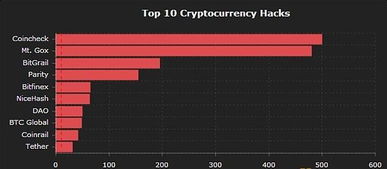Cryptocurrency mining has revolutionized the way in which decentralized currencies, such as Bitcoin, Ethereum, and Dogecoin, are generated and transacted. While the allure of unlimited digital wealth draws in many adventurers, the technical complexities and resource demands present a formidable barrier to entry for the unseasoned. This is where mining pools enter the equation—a collaborative effort among miners aiming to streamline the mining process and maximize rewards. But the question remains: is joining a mining pool worth your investment?

Mining pools aggregate the hashing power of all participants, allowing members to tackle the mathematical puzzles needed to validate transactions more effectively than they could individually. The mathematical intricacies involved are akin to an elite puzzle that requires significant computational power to unravel. In this collective environment, miners share their resources, enhancing their chances of discovering new blocks on the blockchain. But while pooling resources can yield quick returns, the investment dynamics can vary greatly based on the structure of the pool itself.
Consider Bitcoin, the titan of cryptocurrency that introduced the world to the concept of mining through its Proof of Work consensus algorithm. Joining a Bitcoin mining pool can significantly tilt the scales in favor of profitability, given the rising difficulty of mining. In contrast, joining a pool dedicated to lesser-known altcoins, like Dogecoin, may yield different results, contingent upon market volatility and community engagement. Is your investment strategy aligned with the potential inefficiencies or advantages of such pools?

Ethereum, too, features pools promoting collaborative mining efforts. As Ethereum transitions from Proof of Work to Proof of Stake, miners are contemplating their futures. Even so, Ethereum mining pools can still offer viable options until the network fully embraces staking. The rich tapestry of Ethereum’s decentralized applications (dApps) proves enticing for miners, drawing them into society’s expansive blockchain landscape. The diversity in the Ethereum economy significantly impacts the mining strategies—where one must evaluate the underlying technology and potential for token fluctuation, ensuring every decision is rooted in knowledgeable analysis.
Delving deeper, the essence of successful investment in mining pools hinges upon understanding the fees involved, the payout structures, and the reliability of the pool operator. Some pools charge a modest fee but offer quicker payouts, while others may have a more convoluted structure, requiring a more extended commitment before seeing any tangible returns. Being part of the right mining ecosystem can amplify your investments, but it requires due diligence and persistent monitoring. Knowledge is, after all, your most profitable ally in this gritty sector of cryptocurrency.
The technological realm of cryptocurrency mining is rife with jargon and various hardware requirements. Understanding the intricacies of mining rigs and their capabilities is paramount. The competitive landscape necessitates the use of specialized hardware, often referred to as ASICs (Application-Specific Integrated Circuits) for Bitcoin mining, or high-performance GPUs (Graphics Processing Units) for Ethereum. Mining enthusiasts must ascertain the power consumption against potential income—a fine balance that dictates profitability. Here, the significance of robust hosting services cannot be overlooked; many miners choose to co-locate their rigs in professionally managed mining farms to mitigate overhead costs and ensure stable operations.

As the cryptocurrency universe expands, the importance of timing cannot be overstated. The waves of market sentiment often dictate the profitability of being in a mining pool versus pursuing solo mining. For instance, sudden bull runs in Bitcoin can amplify a mining pool’s output and profit margins, especially for those who entered the pool early enough to enjoy the boons of sheer network power. On the flip side, drops in market values may lead to diminished returns, a reality that pools may be ill-equipped to handle if they lack adequate strategies to counteract losses.
Moreover, community engagement is pivotal in determining the long-term viability of a mining pool. A pool with an active community not only fosters communication but also enhances cooperative decision-making, allowing members to strategize and respond effectively to market trends. This factor might often be overlooked, yet it can significantly influence the overall experience and capital growth within the mining fraternity.
In conclusion, while the promise of digital riches through cryptocurrency mining pools is enticing, it is crucial to approach it with calculated caution. Diving headfirst without a keen understanding of the mechanics, risks, and technologies involved can lead to regrettable outcomes. Ultimately, participating in a mining pool can be a worthwhile investment, provided that miners undertake thorough research, adopt informed strategies, and stay responsive to the volatile nature of the cryptocurrency market.